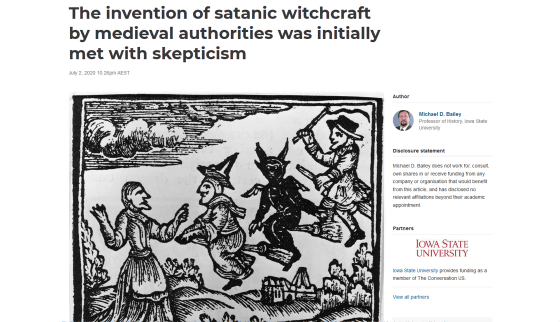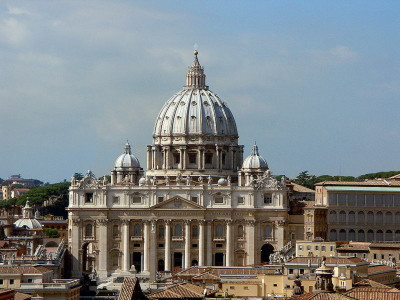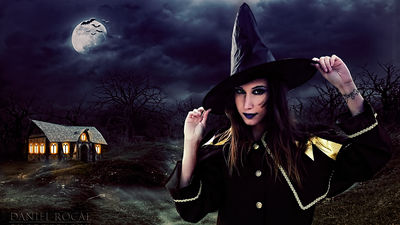Researchers point out that the concept of 'witches and witchcraft' in Europe was created by a medieval authority and spread to the people

It is said that
The invention of satanic witchcraft by medieval authorities was initially met with skepticism
https://theconversation.com/the-invention-of-satanic-witchcraft-by-medieval-authorities-was-initially-met-with-skepticism-140809

Medieval Europe from the 5th century to the 15th century was a time when people were widely believed to exist as magic, monsters, and fairies. It seems that the concept of ``wicked people perform magic'' existed at the time of ancient Greece and Rome, but the church until the middle of the Middle Ages was almost indifferent to magic and magic, Professor Bailey points out. I will.
For example,
Around the twelfth century when European cities developed, churches that influenced all over Europe required many learned intellectuals, so universities were established in urban areas. The university did research on ancient texts and books from the Islamic sphere, including those describing the complex system of magic that draws out the power of the star and wakes up the power of the spirit. It was As a result, the influence of systematic magic gradually spread to the elite.

The people who were oppressed by the subsequent witch hunt did not, of course, refer to the books that came from the Islamic world. Those who were said to 'use magic' in the populace gathered herbs, made medicines, and sometimes cast short spells, in a way that had been handed down for generations, but this was someone's illness. Its main purpose was to treat and protect it from harm. Such magical folk remedies were important in times when there was only a rudimentary medical system.
The Church initially cut off this 'magic' as a mere superstition, but as the concept of magic spread among the elite, it began to take the problem of magic more seriously. In the process, the church began to think that civilian magicians might be worshipers of the demons who conflict with the church.
According to Professor Bailey, in the 1430s, church

Professor Bailey, who translated the early texts written by the powerful about witches and witchcraft, said the authors were worried that 'readers may not believe the content' or 'may be despised'. Said that. Actually, when looking at the record of the witch trial in the Middle Ages, the point that 'the witch worships the devil' was not so much interested, and the people were interested in the witchcraft that causes disease and kills crops I understand that.
Also, many people did not trust the author Heinrich Krammer at the time when the ' Witch iron for witches ', which had a strong influence as a handbook for witch hunting, was announced in 1486. In fact, when Kramer attempted to hunt a witch before the publication of 'The Hammer for the Witch', the suspects were released in response to a reaction from the church, and Kramer was accused by the local bishop of 'encumbered'. I am.
However, as a result, ideas about witchcraft and witches permeated the wider public, and horror and hysteria led to massive witch hunting. For this reason, Professor Bailey pointed out that in the 15th century, problems such as plagues, wars, and church divisions had subsided, societies had settled down, and typography was invented, which provided a place for new ideas to spread. Reformers in the church also used the concept of witches and sorcery to seek spiritual refreshment.
As a result of the church's popularization of the concept of witches, it was said that between the 15th and 18th centuries, 50,000 people were executed by witch hunting, with hundreds of large ones being executed at one time. Eventually, witch hunting in Europe converged and witches and witchcraft became superstitions again, but it is worth remembering that initially the powers made various attempts to make the people believe in witches and witchcraft. Yes, Bailey said.

Related Posts:
in Note, Posted by log1h_ik







